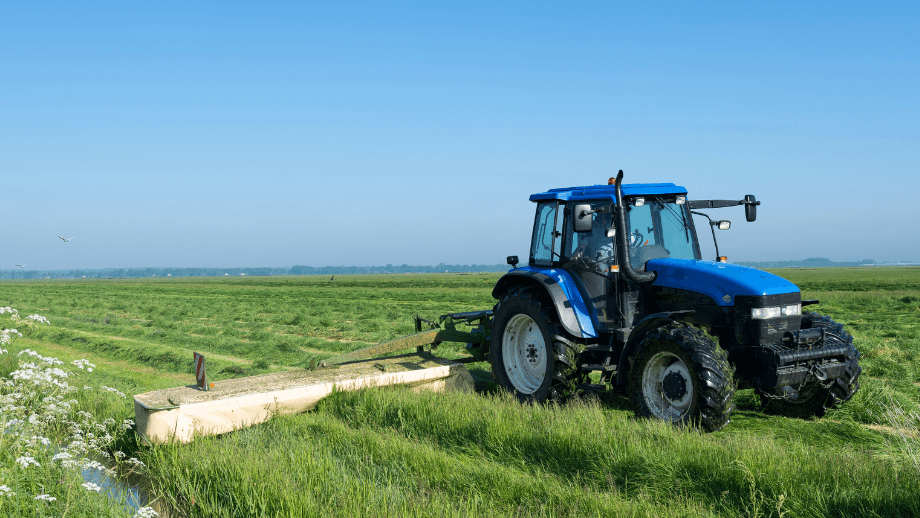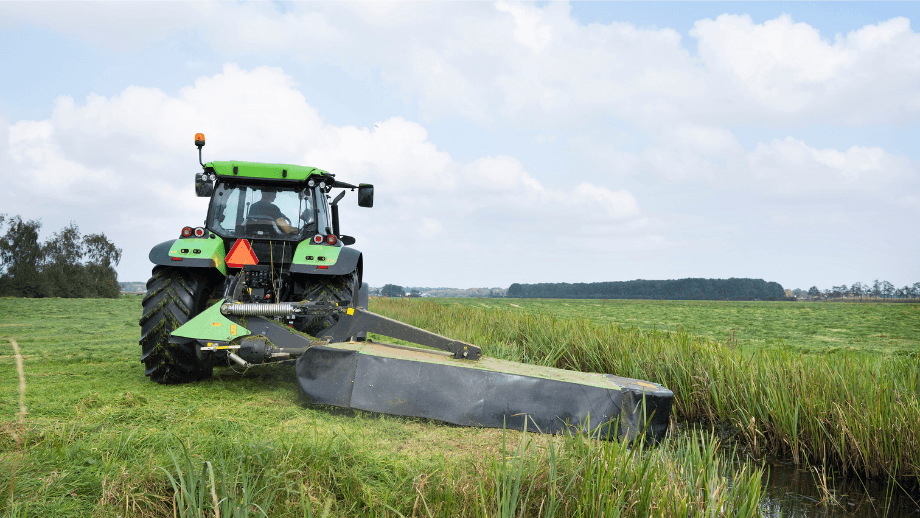
Improving the cutting pattern: 5 tips for practice
A clean cut is essential when mowing. We reveal which factors are decisive.
A clean cutting pattern is crucial when mowing grassland: not only can unclean mowing result in crop losses in the field. An unclean cutting pattern can also have a negative impact on grass regrowth, increase the fuel consumption of the tractor and reduce forage quality. We give you 5 tips on improving your cutting pattern in practice.
Tip 1: Check the blade sharpness
Blunted blades are a common problem that can occur with all mowing techniques. Before mowing, you should therefore check whether all blades are still sharp or whether they need to be resharpened or even replaced. Blunt blades crush or tear the grass during mowing instead of cutting it cleanly. This not only makes it more difficult for the grass to grow back, but also increases the tractor's fuel consumption.
Tip 2: Assess the weather correctly
Good weather is one of the prerequisites for successful mowing. However, it is not only the current weather conditions that are decisive - the moisture in the crop should also be examined closely. In the early hours of the morning, and in some regions even as late as midday, grassland can still be wet with dew. This residual moisture not only causes mowers to clog more quickly, but also worsens the cutting pattern. It may therefore be worth waiting until midday and only starting mowing when the grass has completely dried.
Tip 3: Set the correct mowing height
The right cutting height is an important factor that can influence the cutting pattern. A cutting height of around 7 cm is ideal for existing swards and 9 cm for newly sown stands. If the cutting height is too low, this can have serious consequences: The sward can be damaged, leading to more difficult, sometimes patchy and uneven regrowth. Cutting too low also increases the risk of dirt accumulation and blade wear.
If a higher cut is required, the mower must be adjusted using high-cut skids or, in the case of drum mowers, spindle systems, spacer plates or high-cut skid plates. If this is not done, but the height of the mower is incorrectly adjusted via the top link, the angle of attack of the blades is no longer optimal and a wave cut across the direction of travel occurs.

Tip 4: Choose the right contact pressure
To protect the sward, the lowest possible contact pressure should always be set on the mower. But be careful: If the ground pressure is set too low, the mower will rise and fall too much. This results in an uneven wave cut in the longitudinal direction. It is important to remember that the ground pressure must be increased as the speed increases.
Tip 5: Check the conditioner
Many mowers are combined with conditioners to condition the clippings. The correct setting must also be ensured here: If leaves and stalks are processed too much in the conditioner, there will be increased crumbling losses in the field. In addition to forage losses, an incorrect setting can also put a strain on the machines, as it increases wear and fuel consumption.